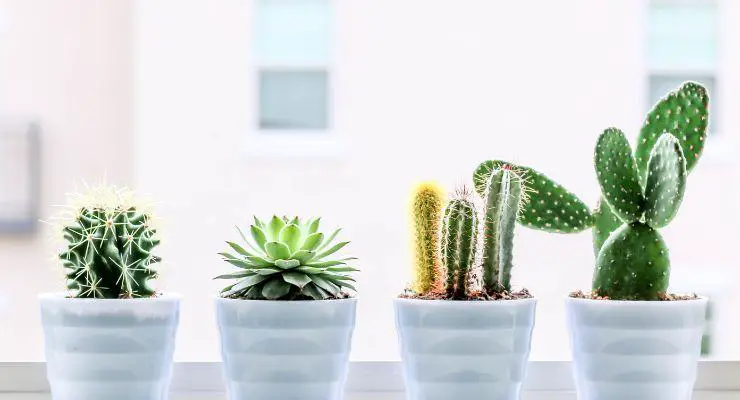Cactus etiolation is a common problem faced by cactus enthusiasts and gardeners alike. It occurs when a cactus experiences stunted growth, spindly stems, and pale, yellowing leaves due to a lack of proper care and environmental conditions.
Understanding etiolated plants are crucial for maintaining the health and appearance of your cactus plants.
Cacti are native to arid and desert environments, making them well-adapted to hot, dry conditions. However, when grown in a different environment, cacti can be prone to etiolation if they are not given proper care.
The lack of sunlight, low humidity, overfertilization, improper watering, and other environmental factors can all contribute to an etiolated cactus.
Cactus etiolation is not only unsightly, but it can also weaken the plant and make it more susceptible to disease and pests. With proper care, however, cacti can recover from etiolation and thrive in their new environment.
This article will provide a comprehensive guide on what causes this condition, how to recognize it, how to treat it, and how to prevent it from happening in the future.
What Causes Cactus Etiolation?
Cactus etiolation occurs when a cactus plant becomes elongated and weak. There are several factors that contribute to an etiolated cactus, including lack of sunlight, low humidity, too much fertilizer, insufficient light periods, and overwatering.
Lack of Sunlight
Lack of sunlight is one of the most common causes of etiolation in cacti. Cacti are native to arid and desert regions, where they receive ample sunlight.
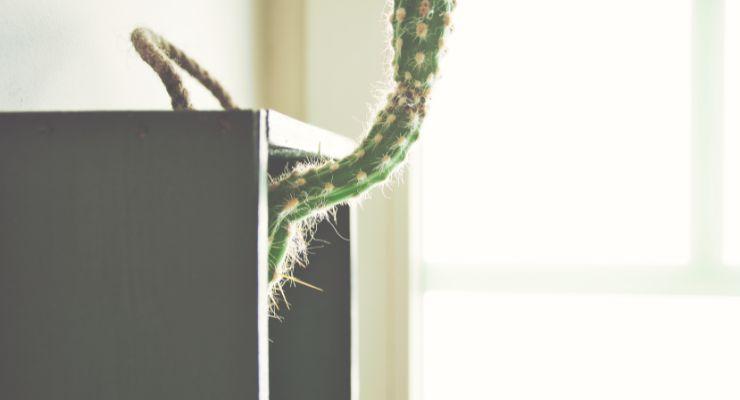
When grown indoors or in shady outdoor areas, they may not receive enough light to maintain their natural shape and size. This can lead to stretching and weakness in the stems and leaves.
It is important to understand the causes so that proper care and maintenance can be provided to prevent them from occurring.
Low Humidity
Low humidity can also cause cactus etiolation, as cacti are adapted to dry climates. In high-humidity environments, the plants can absorb too much moisture, leading to soft and mushy stems and leaves.
Too Much Fertilizer
Too much fertilizer can also cause cactus etiolation, as it can lead to overstimulation of the plant’s growth and interfere with its natural rhythms.
Not Enough Light Periods
Not providing enough light periods or exposure to full spectrum light can also cause cactus etiolation, as the plant needs a balance of both light and dark to maintain its growth and health.
Overwatering
Overwatering is another factor that can contribute to etiolation, as excess moisture can cause the roots to rot and reduce the plant’s ability to absorb nutrients and light.
How to Recognize an Etiolated Cactus
Cactus etiolation is a condition in which a cactus plant becomes elongated, thin, and weak due to a lack of sunlight.
If you suspect that your cactus may be suffering from etiolation, there are several symptoms you can look for. Here are some common signs to be aware of:
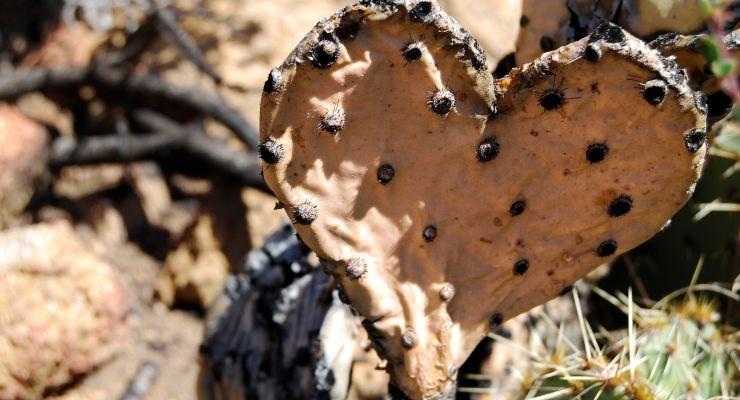
Lack of Growth: One of the most obvious signs of etiolation is a lack of growth. If your cactus is not growing or is growing much slower than usual, it may be a sign of etiolation.
Spindly Stems: Another common symptom is the appearance of spindly stems. Cacti suffering from etiolation tend to have thin and elongated stems, as they are reaching for more light.
Uneven Set of Leaves: The set of leaves on an etiolated cactus may appear uneven, with some leaves growing much larger than others.
Inflated Stems: The stems of an etiolated cactus may appear bloated or inflated. This is a result of the cactus trying to compensate for the lack of light by storing water in its stems.
Drooping Leaves: The leaves of an etiolated cactus may droop or appear limp. This is because the cactus is not receiving enough energy from the sun to support its leaves.
Roots Sticking Outside the Pot: Another sign to watch for is roots sticking out of the bottom of the pot. This can be a sign that the cactus is not getting enough water or that the soil quality is poor.
Dry, Brown, or Yellow Leaves: If the leaves of your cactus are turning yellow, brown, or dry, it may be a sign of etiolation.
Dropping Spikes: In some cases, a cactus may start dropping its spikes or blooms, which can indicate that it is not getting enough energy from the sun.
Loss of Natural Shape: An etiolated cactus may lose its natural shape and become misshapen.
Thicker One Side of the Plant: Finally, if one side of your cactus is thicker than the other, it may be a sign that it is not receiving enough light.
By being aware of these common symptoms, you can quickly determine if your cactus is suffering from etiolation and take action to treat it.
How to Treat Cactus Etiolation
Treating cactus etiolation requires a combination of adjusting the growing conditions to allow the plant to recover. Here are some steps to consider when treating etiolated cacti:
Reduce Watering
Overwatering is one of the main causes of cactus etiolation, so reducing the amount of water you give the plant is an important first step.
Wait until the soil is completely dry before watering your cactus again.
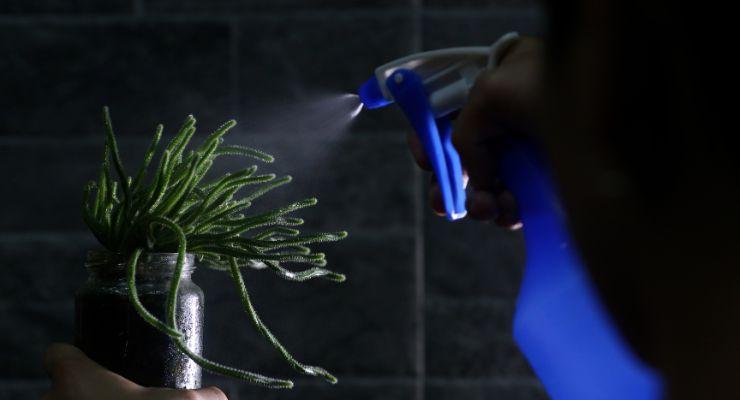
Increase Sunlight Exposure
Cacti need a lot of sunlight, and in particular, direct light, to grow and thrive, so moving your etiolated cactus to a sunnier location can help the etiolated plant to recover.
Place it in a south or west-facing window or outside to provide full sun.
Move Cactus Outside
If you live in an area with a warm climate, moving your cactus outside can help it recover. Outdoor cacti receive more sunlight, which can help them grow stronger and healthier.
Provide More Oxygen
Cacti need well-draining soil that provides enough oxygen to their roots. Consider repotting your cactus into a lighter, well-draining soil mixture to give its roots the oxygen they need to recover.
Remove Damaged Leaves and Stems
Trimming away any damaged leaves and stems can help your cactus focus its energy on recovery. Pruning the tips of your cactus can also help it grow bushier and more compact.
Trimming
Trimming your cactus can help reduce its length and encourage it to branch out, making it stronger and more compact. Trim back the etiolated parts of the cactus, leaving just a few inches of stem.
It’s important to be patient when treating cactus etiolation as it may take several months or even years for the plant to fully recover.
However, with proper care and attention, you can help your cactus get back on track and thrive once again.
How to Prevent Cactus Etiolation
To prevent cactus etiolation, it is essential to provide the right growing conditions for your cacti. Here are some tips to follow:
Proper Light Exposure
Cacti need bright, direct sunlight to grow healthy and strong. Place your cacti near a sunny window or outside in a sunny spot.
However, too much direct sunlight can also harm your cacti. To avoid this, provide some shade during the hottest part of the day or when the sun is strongest.
Appropriate Watering Techniques
Overwatering can lead to root rot and cause cactus etiolation. Make sure to allow the soil to dry out completely before watering again.
It is also important to use well-draining soil to prevent water from sitting in the pot and causing root damage.
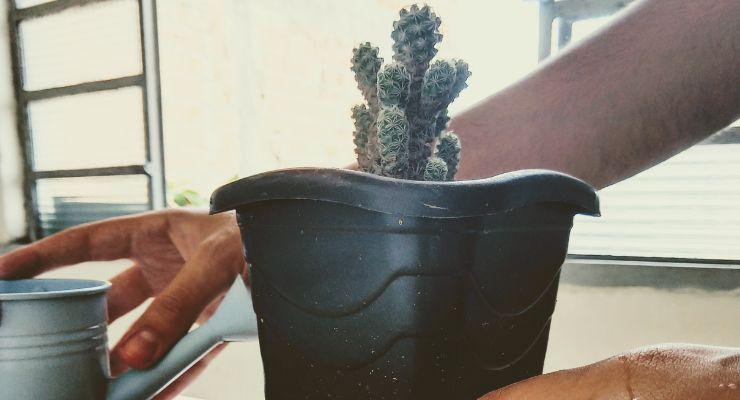
Fertilization Recommendations
Cacti do not need to be fertilized frequently. Too much fertilizer can cause salt buildup in the soil and harm your cacti.
Use a balanced, slow-release fertilizer according to the instructions, and avoid overfertilizing.
Proper Soil Selection and Drainage
Using the right type of soil is crucial to prevent etiolation in cacti. Cacti need well-draining soil that does not hold water.
A mix of regular potting soil, sand, and perlite is recommended.
Maintaining Proper Humidity Levels
Cacti thrive in dry, arid conditions. Maintaining low humidity levels is important to prevent fungal growth and root rot.
If the air in your home is too humid, place a dehumidifier in the room or increase ventilation.
By following these tips, you can provide the right growing conditions for your cacti and prevent cactus etiolation.
Regular monitoring and inspection of your cacti will help you catch any problems early and take action to fix them.
Frequently Asked Questions
Can etiolation be reversed in cacti?
Yes, etiolation in cacti can often be reversed by providing proper care and attention, including increased exposure to sunlight, reduced watering, and improved humidity levels.
If caught early, the cactus should recover and return to healthy growth.
What are the ideal temperature and humidity levels for cacti to prevent etiolation?
Cacti generally thrive in warm, dry conditions with temperatures ranging from 65 to 90 degrees Fahrenheit. Humidity levels should be kept low, around 30 to 40 percent, to prevent etiolation.
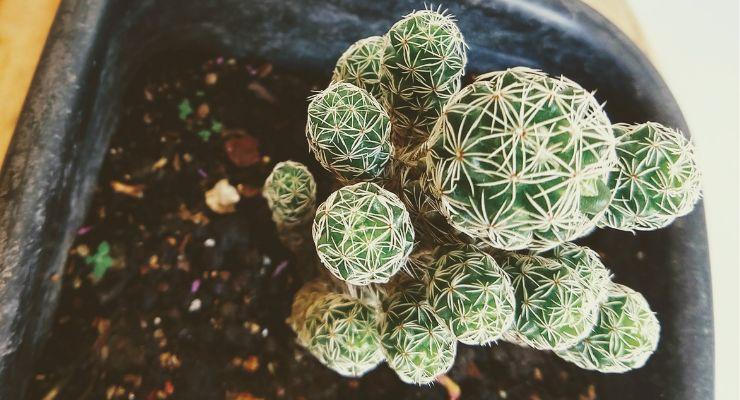
Are there any specific types of cacti that are more prone to etiolation than others?
All cacti can be susceptible to etiolation, but some species, such as tall columnar cacti, are particularly susceptible to this issue due to their height and narrow form.
It is important to be mindful of the specific needs of your cactus species and to provide proper care and attention to prevent etiolation.
Conclusion
Cactus etiolation can be a serious problem for indoor plants, but with the right care and attention, you can help your cacti recover.
Make sure to provide bright light and direct sun exposure to ensure proper growth, as well as use well-draining soil that allows enough oxygen to get to their roots.
Additionally, reduce the watering frequency until the soil is completely dry before adding more water. With these tips in mind, you’ll have healthy cactus thriving indoors or outdoors in no time!
